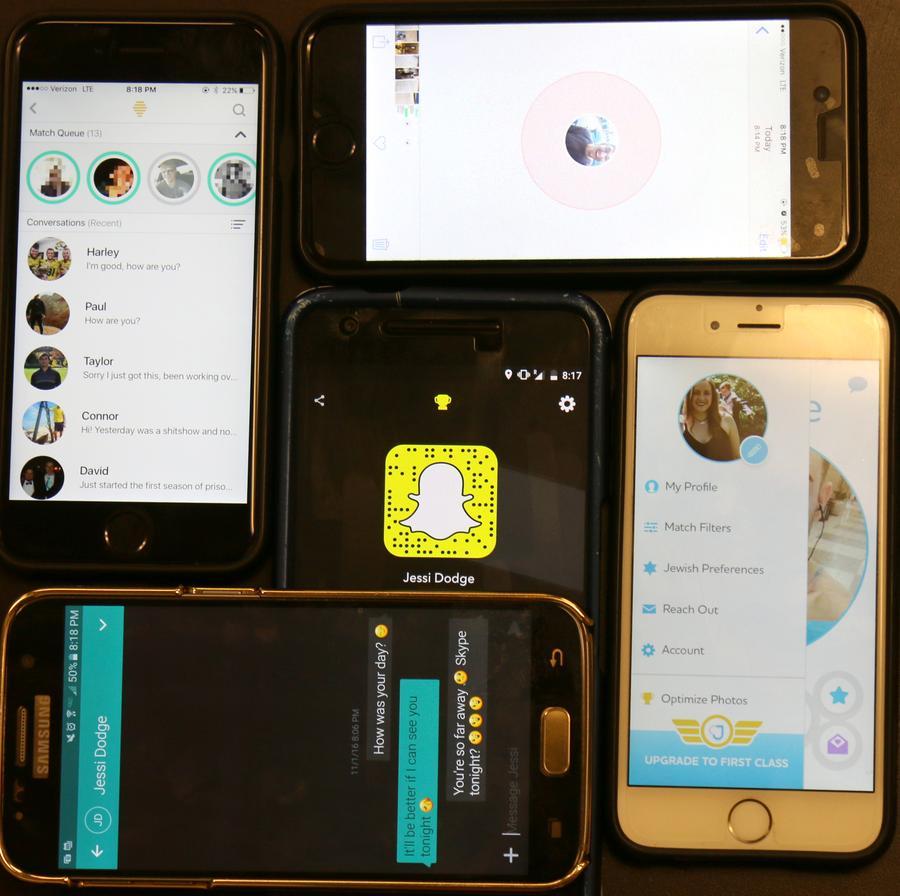
It’s no myth that technology has taken over our lives. Nowadays, you can’t go anywhere without seeing people staring at their phones, earbuds in, swiping away, wrapped up in their own little world. Children are practically born with iPads in their hands.
Millennials are chastised for their obsessive bond with gadgets, but contrarily, their intimate relationships appear to be growing stronger because of it.
Long-distance relationships have a reputation for being frustrating, difficult to manage and ultimately the deathbed of a love life. And sure, it probably sucks sometimes.
But research reveals long-distance relationships tend to be as healthy and successful, if not more so, than a relationship of close proximity. According to a Science Daily story published July 18, 2013, a test conducted by researchers at both Cornell University and in Hong Kong revealed that “long-distance couples felt more intimate to each other, and this greater intimacy is driven by two tendencies: long-distance couples disclosed themselves more, and they idealized their partners’ behaviors.”
Anna Lindell, a doctoral candidate in developmental psychology at MU, said research shows that the more kinds of technology you use to communicate with someone, the higher quality that relationship will be.
“With so many communication options available to millennials, it really is starting to become clear that mobile devices in particular are becoming a necessary tool for keeping our close relationships intact and healthy,” Lindell said in an email.
But technology changes so rapidly these days, Lindell said, and is used for various purposes, so it is hard to pinpoint exactly how technology affects intimate relationships.
It comes down to the frequency of communication and what is exchanged.
“There has been research in the past three or four years showing that when people use mobile phones to communicate with others, this leads to higher levels of relationship satisfaction, it leads people to disclose more of their private thoughts and feelings to those people, and it helps keep relationships ‘current’ even if both parties live many miles apart,” Lindell said. “And these findings appear to be valid across many different kinds of relationships.”
Even with its overwhelmingly positive implications, technology at the core of a long-distance relationship can still create feelings of skepticism, mistrust and isolation.
Freshman Krista Biggar and her boyfriend, who goes to Texas Tech University, have transitioned to a long-distance relationship since parting ways for college. Technology keeps their relationship alive despite the geographical disadvantage, but it still manages to raise a fair deal of quandaries between them.
“He has no idea what’s going on over here since we’re in college, and I have no idea what’s going on over there, so it’s really easy to get jealous about certain things,” Biggar said. “But I think the main thing that causes problems is the tone of voice when we’re texting.”
Biggar said she and her boyfriend text and FaceTime daily, and despite the tonal misunderstandings and temporary problems, she believes their technological communication strengthens their relationship.
Not all research highlights newfound benefits of millennial technology usage; like anything, it has certain downfalls. Last November, Public Source published an article that examined technology’s anatomical effect on developing brains, finding that excessive usage changes the geography of the brain and modifies its development, thus altering many functions down to communication and regulation of emotions.
“I don’t have direct experience with the neurological implications of technology use, but based on what we know about the developing brain, it does seem likely that technology use (just like any other aspect of our environment that we are in contact with) influences brain development in young adults, since the human brain is not fully mature until around age 25,” Lindell said.
These are all important questions that researchers are actively pursuing right now so more of this vast territory can be better understood in the coming years.
“I think this area of research is too new for us to really have a good understanding of exactly how much technology exposure is detrimental for brain development,” Lindell said. “I would argue that it may not only be certain types of technology exposure that could have negative effects, but also the lack of exposure to other important aspects of life that may contribute to problems. For example, if a young adult is spending too much time engaged with their mobile device, then a lack of physical activity could lead to problems.”
Another point of contention is an absence from reality millennials know all too well because of their ubiquitous presence on social media and other digital platforms. Lindell said technology has become pervasive as the primary communication mechanism for so many relationships these days.
“When thinking about mobile devices, there is certainly a concern that millennials are so embedded in what is going on on their phones, that they miss out on ‘real life’ going on around them,” she said.
No generation before this one has dealt with the issues or benefits of technology in their single life or romantic one (hence the novel millennial dating and relationship trends). In simpler times, relationships were maintained through landline telephones and handwritten sentiments, lacking efficiency and constant connection.
In the future, Lindell believes face-to-face interaction will play an increasingly unnecessary role in close relationships, and the very nature of our relationships will evolve in tandem with technological advancements and innovation.
“I don’t think we are going to see fewer close relationships form between people, because as a species humans are inherently social creatures,” Lindell said. “Families who are spread out across the country will be able to remain close with one another, when this would have been impossible in the past, and we will be able to interact with others in other countries with more ease than ever before.”